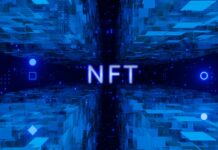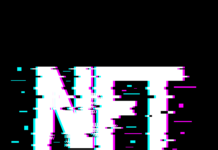Are you searching for the best blockchain for NFT? Then, you’re in the right place! NFT (non-fungible tokens) has become a hot topic in the digital world, and its popularity has grown rapidly.
It’s important to understand the various options available when choosing the best blockchain for NFTs to ensure your project’s security, scalability, and success. In this guide, we’ll explore the characteristics of a good blockchain for NFT and compare the most popular options on the market today.
Choosing the right blockchain can be overwhelming, but with this guide, you’ll clearly understand what to look for. So, let’s start your journey to discovering the best blockchain for NFT!
What is a Blockchain?
A blockchain is a decentralized ledger that ensures secure, transparent, and unalterable record-keeping through distributed consensus. It is widely utilized to create digital assets such as cryptocurrencies or non-fungible tokens (NFTs).
Characteristics of a Good Blockchain for NFT
As a developer, there are several important decisions that you must make when it comes to choosing a blockchain for your NFTs. One of the main considerations is whether to go for a public or private blockchain.
It is important to weigh the pros and cons of each option and decide which one best fits your needs. Another important factor is scalability, which is crucial if you plan to grow your NFT collection.
Additionally, gas fees are a critical aspect to consider, as these fees are associated with minting and storing your NFTs. Moreover, there are numerous other aspects to consider, including:
Transaction Speed
When choosing a blockchain for your NFTs, transaction speed is one of the key factors to consider. Depending on the type of NFTs you want to create, you may require an NFT blockchain that can handle large file sizes or a high volume of transactions.
For example, if you are looking to create high-resolution images or videos, you will need a blockchain that can handle larger file sizes. On the other hand, if you are creating NFTs for use in a game or virtual world, you will need a popular NFT blockchain that can handle a high volume of transactions.
It is important to research and compare different blockchains to find the one that best fits your needs.
Transaction Costs
Transaction costs are another important consideration when choosing the best blockchain for your NFT. It is important to understand the upfront and ongoing costs of creating and minting NFTs on a particular blockchain.
For instance, some blockchains charge fees every time an NFT is transferred, so it is essential to factor in these costs if you plan on selling your NFTs. Furthermore, some blockchains are more expensive than others, so it is important to research and compare different options to find the most cost-effective solution.
Smart Contract Functionality
The ability to execute smart contracts is an important consideration when choosing a blockchain for your NFTs. Smart contracts are essential for the transfer of NFTs; therefore, it is crucial to ensure that the top blockchains for NFTs you choose can support the execution of smart contracts.
Firstly, ensure that the blockchain you are considering has the necessary functionality to support smart contracts. Secondly, consider the language used to write smart contracts on a particular blockchain. Some blockchains use their own proprietary language, while others use more standard languages like Solidity.
Finally, consider the gas fees associated with running a smart contract on a particular blockchain. These fees can vary significantly from one blockchain to another, so it is important to consider this factor when deciding.
Security
Security is a crucial factor to consider when choosing a blockchain for your NFTs. With digital assets at stake, ensuring that your NFTs are stored securely is essential. Blockchain provides a decentralized ledger for storing NFTs, reducing the risk of hacks or fraudulent activities.
However, not all blockchains are equally secure, and it is essential to perform thorough research to select a blockchain with a good security record. Failing to do so could result in losing your NFTs to a hacker or a scammer posing as an NFT collector.
Forking
Understanding the concept of forking is important for NFT creators. Forks are created when developers take the code from an existing blockchain and develop a new, separate version with its rules.
There are two types of forks: hard and soft. A “hard fork” is a major change to the underlying code of the blockchain, making it backward incompatible. In such cases, you must create a new wallet and cannot use your old one. Hard forks are typically used to roll out major changes or updates to a blockchain.
In contrast, a “soft fork” is a change that is still compatible with the old version. You can still use your old wallet with the new blockchain, and soft forks often introduce minor changes or updates.
Consensus Mechanism
The consensus model used by a blockchain is a crucial factor to consider for NFT creators. It not only determines other significant aspects, such as fees, speed, functionality, and security, but it also impacts the environment.
Top-notch NFT blockchains that use the proof-of-work consensus model require high electricity consumption and powerful computing devices, leading to the emission of greenhouse gases.
Hence, it is recommended to adopt only those popular NFT blockchain ecosystems that use proof of stake or other greener consensus models to develop NFTs. This not only helps the environment but also ensures that you are contributing to a more sustainable future.
Best Blockchain for NFT: Top 5
Ethereum
Despite the mounting competition, Ethereum remains the most popular NFT blockchain. The reasons are abundant: as a highly decentralized blockchain, it provides all the financial and legal services one typically needs for transactions without requiring intermediaries.
It also houses some of the most popular NFT marketplaces (OpenSea), NFT projects (CryptoPunks and the Bored Ape Yacht Club), and NFT artists (Pak and Beeple). Until recently, Ethereum required an exorbitant amount of energy to operate since it relied on a proof-of-work (PoW) consensus mechanism.
Consensus mechanisms are the systems that allow a blockchain to operate in a decentralized manner, but in light of PoW’s notoriously energy-intensive operations, it uses cryptographic computations to validate transactions in the network.
That’s one of the reasons why, on September 15, 2022, Ethereum switched to a consensus mechanism known as proof-of-stake (PoS) in an event called the merge. The blockchain’s energy needs plummeted by 99.5 percent, and it now consumes less energy than even a simple Web2 platform like PayPal.
While some debate remains about how secure the new PoS system is compared to PoW, Ethereum is still considered a safe blockchain to use, with the merge opening the door for future upgrades that the Ethereum Foundation claims will further increase its security.
Considering its popularity, security, decentralization, and ease of use, you should consider this blockchain first when deciding where to mint.
Solana
Founded in 2017 by Anatoly Yakovenko, Solana was built to solve the high costs and slow transaction speeds common in blockchains like Ethereum and Bitcoin. When it arrived on the scene, blockchains were severely limited in their processing capabilities and could only handle roughly 15 transactions per second (TPS).
Solana’s TPS now surpasses that of Visa, and even rivals Mastercard’s, earning it a firm spot as an industry leader regarding speed and scalability. The blockchain’s transaction fees are also quite low, making the network increasingly popular and one of the fastest-growing ecosystems in crypto. SOL’s market cap was more than $10 billion as of this writing.
Solana is also one of the most popular and fastest-programmable NFT blockchains in crypto. Its unique combination of proof-of-history (PoH) and proof-of-stake (PoS) consensus mechanisms remove the need for the complex cryptographic puzzles that power PoW mechanisms.
Proof-of-History (PoH)
PoH is a computational process that can cryptographically verify the passing of time between two events in the blockchain, which reduces validation times and fees. The Solana blockchain is used to ensure that transactions are in the right order and found by the correct leader (validator).
Like Ethereum, Solana’s PoS system enables users to stake an amount of cryptocurrency for the chance to be randomly chosen as a block validator. Validators earn crypto (in this case, Solana’s native token, SOL) when selected. This incentivizes users to become shareholders and rewards them for doing so.
Thanks to Solana’s PoS and PoH mechanisms, its transaction fees and times are about as low as possible. However, while some major NFT marketplaces like Magic Eden operate on Solana, the chain isn’t as widely used as Ethereum, meaning there are both fewer marketplaces and people trading on the blockchain.
Tezos
Founded in 2017 by Kathleen and Arthur Breitman, Tezos is an open-source platform for assets and applications. Like other blockchains, it enables the creation of smart contracts and the building of decentralized applications (dApps).
Tezos’ native token is XTZ. While the chain is popular with regard to NFTs, its crypto ranks around 40th in terms of market cap. But Tezos’ selling point has always been innovation, not market dominance.
One of the things that makes the Tezos blockchain unique is its ability to self-amend. This means it can improve over time via a formalized protocol upgrade process. Coupled with the fact that Tezos has long incentivized developers to build dApps on the platform, the chain is seen as a major leader in operability.
Like Solana and Ethereum, Tezos uses a PoS consensus mechanism to help reduce the computational work needed to verify block and blockchain transactions. Additionally, its transaction fees are lower than Ethereum’s (but more than Solana’s).
One of the first marketplaces on the blockchain, Hic et Nunc, was heralded as an economical alternative to Ethereum-centric marketplaces—until the platform shut down on November 14, 2021.
Tezos is a great place to start for those looking for the best blockchain to mint NFTs or large-scale collections. Currently, Objkt is the largest and most popular marketplace on the Tezos chain.
Flow
Flow is one of the best blockchains for creating NFTs, a high-performance blockchain designed specifically for creating NFTs, games, and decentralized apps (dApps). In stark contrast to general-purpose blockchains like Ethereum, Flow is built with scalability in mind, meaning billions of people could potentially interact with NFTs on the blockchain.
Originally launched in 2019, Flow quickly rose to prominence as the blockchain partner of the NBA. A product of Dapper Labs (the team behind legacy project CryptoKitties), Flow facilitated the launch and is the host of NBA Top Shot, making the blockchain an integral component in the popularization of non-fungible tokens.
Like Tezos, Flow also uses a sole PoS consensus mechanism to verify transactions. Because of this, the blockchain can handle a higher amount of TPS than Ethereum, with Flow developers stating that the chain has sustainably allowed for “a throughput of significantly more than 100 TPS,” though they don’t specify an exact number.
Aside from Blocktobay (a popular Flow-native NFT marketplace), Flow NFTs are tradeable via OpenSea, Rarible, Foundation, and many other platforms. Flow has become a popular place for sporting NFTs, as organizations like the NBA, NFL, UFC, and more have launched their own marketplaces on the blockchain.
Yet, like Solana, Flow isn’t as widely used as Ethereum, resulting in fewer NFT marketplaces and fewer people trading on the blockchain.
Worldwide Asset Exchange (WAX)
The Worldwide Asset Exchange (WAX) has become a network of choice for digital collectibles and virtual items. As historic NFT sales and viral collections on Ethereum, Tezos, and Solana have made headlines over the years, WAX has built a reputation for being a home for Web3 gaming.
WAX was founded in 2017 by crypto pioneers William Quigley and Jonathan Yantis. The chain is based in the Cayman Islands and aims to embody a mission of global accessibility. WAX gives its users access to thousands of apps and a range of NFT marketplaces.
WAX is also home to several top blockchain games, including Alien Worlds, Farmer’s World, and Prospectors. Its prominence in blockchain gaming means the biggest projects on the chain hail from the play-to-earn sector.
Similar to other high-efficiency blockchains, Wax employs a PoS mechanism but also creates carbon offset NFTs and partners with Climate Care as part of a mission for sustainability. Similar to Flow, transaction fees on WAX are significantly low, and as a unique incentive to collectors, network fees are redistributed to the WAX community.
WAX marketplaces also host various influential brands, including baseball collectibles company Topps, racing giant NASCAR, toy company Hot Wheels, and even a few cult classic film franchises like Godzilla, The Princess Bride, and Spiderman.
Binance Chain (BNB)
Formerly two separate chains—Binance Smart Chain (BSC) and Binance Chain — Binance rebranded to BNB Chain in February 2022 to foster innovation in the network and move toward greater decentralization.
One of the more highly centralized chains, with several of the chain’s PoS validators, reportedly holding direct ties to the Binance Crypto Exchange, the network still strikes a good balance between low fees and high-speed transactions.
One of the reasons for this is that BNB Chain uses a consensus model called Proof-of-Staked-Authority (PoSA), which can support a short block time and low fees. Yet, the validators running transactions take turns producing blocks, with the 21 validators needed to run the exchange switching every 24 hours.
According to some reports, 11 of the 21 validators control the Binance Chain and are all directly connected to the Binance Crypto Exchange. While centralization is a turn-off to many within the crypto and NFT ecosystems, the BSC NFT market did begin to pick up some speed towards the end of 2021.
While centralization is a turn-off to many within the crypto and NFT ecosystems (its team recently paused the entire network after a $100-million hack, for example), the chain hosts some increasingly popular NFT marketplaces like Element, Mobox, and PancakeSwap, although the ecosystem is undoubtedly not even close to being as robust as Ethereum’s.
Challenges and Risks in Non-fungible Tokens
Complexity
Despite the growing adoption of non-fungible tokens (NFTs) and decentralized applications (dApps) among startups and enterprises, the technology and tooling that underpins these innovations are still in their infancy.
This means that high-quality tooling does not fully address many of the complexities involved in building NFT-related solutions. This can pose a significant challenge for developers and organizations looking to take advantage of these technologies.
Legal/Regulatory Implications
The emergence of innovative technologies such as NFTs and decentralized applications has brought a range of new regulatory and legal considerations. These include, but are not limited to, know-your-customer (KYC) procedures, anti-money laundering (AML) measures, and compliance with securities laws.
Organizations looking to adopt these technologies must consider these considerations to operate within the bounds of the law.
Rapid Innovation
The fast-paced nature of innovation in the NFT ecosystem and the blockchain networks on which they are issued present significant challenges for those looking to adopt these technologies.
Change is constant, and organizations must be agile and modular to keep up. This requires a focus on flexibility, scalability, and adaptability to ensure continued success.
Concerns Regarding Ecological Impact
There is ongoing controversy around the impact of energy-intensive blockchain networks that use the proof-of-work consensus mechanism on the environment, and NFTs have been a particular target of criticism.
However, solutions are already available to address these concerns, such as adopting less energy-intensive consensus mechanisms and using “Layer 2” or L2 networks for faster and more efficient validation of NFT transactions outside the main blockchain network.
For example, the Ethereum blockchain network is transitioning to the more energy-efficient Proof-of-Stake consensus mechanism in its Ethereum 2.0 launch, and L2 solutions like Polygon and ImmutableX are already reducing the load on the network today.
Conclusion: Best Blockchain for NFT
Undoubtedly, NFTs have become the next big thing. They have penetrated both large-scale and small-scale businesses that are hyper-concentrating on initiating trailblazing Web3 campaigns with the vision of establishing newer, more enthusiastic communities, spaces, and revenue policies.
The best blockchain for NFT is one that provides the right combination of security, scalability, decentralization, transaction speed, cost, and user experience. With so many options available, choosing the right blockchain can seem overwhelming.
Finalizing a blockchain of choice and obtaining development competence might be a highly lucrative career choice for individuals wishing to capitalize on the unforeseeable future.


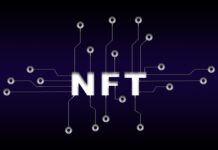
![[2023] 11 Top NFT Games of the Year: A Must-Play List top nft games](https://keystone.finance/wp-content/uploads/2023/01/top-nft-games-218x150.jpg)

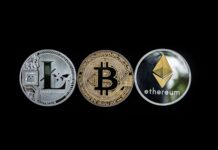
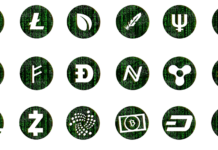
![[2023] How to Buy NFT on Coinbase: Simple and Easily Purchase buy nft on coinbase](https://keystone.finance/wp-content/uploads/2023/02/buy-nft-on-coinbase-218x150.jpg)
